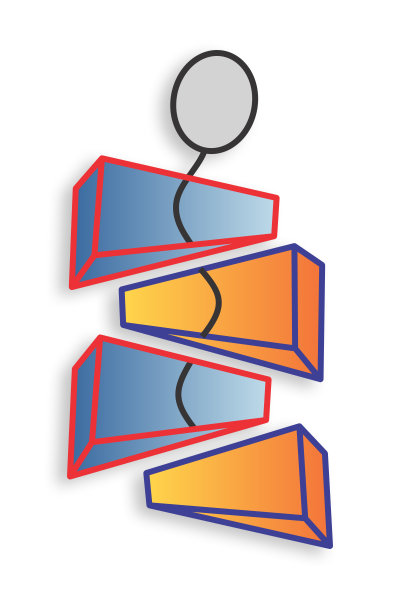ISST Basic Course Part I
Goals and Description
In the first course it is the presentation of an overview regarding theory and practical parts of the approach combined with general information regarding scoliosis.
The students will learn to recognize scoliosis features, assess scoliosis, categorize patients and start to develop thinking in “Body Blocks” and necessary corrections in body planes around biomechanical axes. Corrective breathing provides an essential element for the use of intrinsic forces to improve functional activities and mobility in the concavities of the deformed and altered trunk.
Positioning with simple tools is a crucial part in the learning process from a simple to a more complex understanding and also a first step in the adaptation of the ISST elements into the daily routine of the therapy process.
Participants learn the basic corrections including pelvic corrections with basic tension and assistive shoulder traction. Manual techniques will be used for proprioceptive teaching and to improve functional capability of the patients.
Basic 3 dimensional stabilizing exercises in stable positioning help to restore physiological alignment. Important is to adapt and internalize the typical exercise instructions in order to reach an automated state in the learning process.
At the end of Part I the written exam takes place.
Homework task / study task
Between Part I and Part II participants have to prepare a documentation of 2 case reports for 2 different patients.
The documentation includes examination protocol, positioning diagram, photos from patients in standing position (front-back-side-Adams test), with basic corrections in lying and sitting position and the therapy plan: 3 exercises, 1 breathing exercise, 2 mobilizing techniques, 2 home-exercises.
In Part II these papers will be a prerequisite for the certification process.
Some of the case reports have to be presented and discussed.
Study task
Students have to read the 2011 Sosort guidelines scoliosis. Pubmed, scoliosis journal is an open access journal: www.scoliosisjournal.com
Goal for the homework task and study is to work independently with the examination assessment tools and practice the evaluation, preparation and documentation of the scoliosis specific therapy.
The case presentation at Part II describes ways to install the program in the daily routine and it could be discussed the prospects but also the limitations of the approach.
Studying the Sosort Guidelines 2011 helps to understand the range of different less and more intensive conservative therapy elements (regular observation, exercise based pro-active therapy, part-time/full-time bracing, surgical intervention) regarding the assessment of the risk of progression. To get in contact with the scoliosis journal is necessary in order to find more current and developing information in the scoliosis field.
